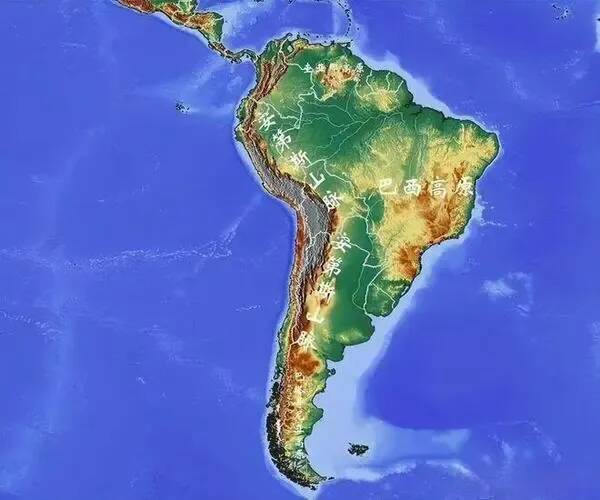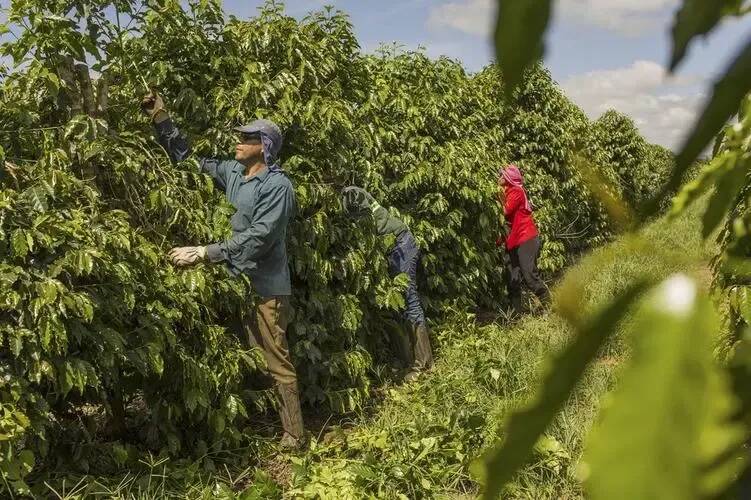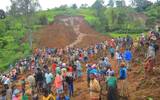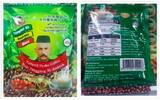Introduction to the Brazilian coffee producing area of Espírito Santo in South America
South America is the world's four continents, and is a continent with more volcanoes in the world. With a variety of natural resources such as the Andes and the plains of Brazil, coupled with the warm and humid climate of tropical rain forest and savanna in most of South America, these conditions are very suitable for coffee growth. therefore, South America has many large coffee-producing countries, such as Brazil, Colombia, Ecuador and so on.

Among them, Brazil is the largest country in the Americas, with a total land area of 8.5149 million square kilometers, developed agriculture and strong industrial base. 17 of the country's 26 states produce coffee, so Brazil has become the world's largest coffee producer.
Brazilian coffee can become the largest coffee producer because of its superior geographical conditions and climatic environment. The topography of Brazil is mainly divided into two parts, one is the Brazilian plateau above 500 meters above sea level, which is mainly concentrated in the south-central part of the country, and the other is the plain below 200 meters above sea level, mainly distributed in the Amazon River basin in the north and west, while coffee is mainly grown in the south.

Most of Brazil is tropical, with a central savanna climate and a subtropical monsoon humid climate in the south, with an annual average temperature of 16-19 ℃. In addition, Brazil has sedimentary volcanic clastic soil and brown clay rich in organic matter and minerals, which have good drainage, many rivers and a suitable climate, so they are suitable for coffee cultivation.
Initially, coffee seeds were first planted in the Brazilian state of Para, and then coffee spread from the north to other parts of Brazil. As demand for coffee began to increase in the United States and Europe in the mid-19th century, Brazil's coffee industry also boomed, when coffee became Brazil's main export, accounting for 30% of the world's coffee production, which boosted Brazil's economy.
However, during the Cold War in the 20th century, coffee production was seriously overproduced and coffee prices fell sharply, so Brazil signed international coffee conventions with a number of countries to restrict exports. It was not until the end of the 20th century that it withdrew from the Convention and the Brazilian Fine Coffee Association (BSCA) was founded in 1991 to promote boutique coffee in all Brazilian producing areas and its market development.
At present, Brazilian coffee is mainly grown in four states: Parana, Sao Paulo, Minas Gerais and EspiritoSanto, which account for 90 per cent of the country's total coffee production.
Among them, the most famous is the state of Milas Gerais, where the relatively famous sub-regions Syrador and South Minas are both in this state. Qianjie Coffee has a half-sun-treated Shirado coffee, which is selected as an entry representative with chocolate flavor and nutty flavor. the taste is balanced.
Although the planting area of Espiritu Santo is smaller than that of other coffee producing areas, it also has a good planting environment. Montanhas do Esp í rito Santo in Esp í rito Santo, which stands for a mountainous area in Portuguese, is also dominated by mountains, between 700 and 1000 meters above sea level, and near the Atlantic Ocean, baptized by sea breezes.
The cultivation mainly chooses the Robusta species with strong wind resistance, which currently accounts for 80% of the state, but in the south of the state, Arabica varieties are mainly planted in the south of the state. Due to the moderate temperature and suitable geographical environment, in recent years, the Arabica varieties produced in Esp í rito Santo have performed well. C ó rrego da Liberdade Manor in this state, for example, ranked fifth in the Brazilian COE washing group in 2023 with a score of 88.88.
C ó rrego da Liberdade is managed by Jeremias Lietig Braga, a fourth-generation coffee producer whose great-grandfather came to the mountains of Espiritu Santo from Germany and began to grow coffee here. At present, Jeremias and his wife take care of the coffee trees and own small processing plants, so Jeremias does it himself from harvest to processing to ensure that high-quality coffee is produced.
Important Notice :
前街咖啡 FrontStreet Coffee has moved to new addredd:
FrontStreet Coffee Address: 315,Donghua East Road,GuangZhou
Tel:020 38364473
- Prev

The death toll reached 229! Serious landslide occurred in Ethiopia
According to Ethiopian media reports, on the evening of July 21 local time, a landslide occurred in the Gofa Zone, southern Ethiopia's ethnic minority state, causing heavy casualties and property losses. The cumulative death toll has exceeded 229. People, estimated casualties
- Next

Don't drink! This coffee could kill you! Sales have been banned!
▲ Click to pay attention| Daily Boutique Coffee Culture Magazine Coffee Factory Recently, China Daily reported that a pre-brewed coffee called "Kopi Songkok" contains a potentially fatal ingredient Sildenafil. Frequently sharing medical advice on social media
Related
- Caught off guard! Starbucks '15-year-old store quietly closes!
- Naixue Drink drank a stone and claimed a claim was retaliated by the merchant?!
- What is the difference between a cake filter cup and a V60 conical filter cup? What are the advantages and disadvantages of the flat-bottomed filter cup brewing solution?
- What is the difference between fine coffee powder and medium coarse coffee powder? Do I need to sift out the fine coffee powder for making coffee by hand?
- Why does hot American coffee taste bitter? Difference in proportional concentration between hot American and ice American
- Is espresso stored overnight in the refrigerator harmful to your body? Is frozen coffee better than freshly ground coffee?
- What parameters and proportions of water temperature should be used to grind and brew fresh coffee beans? Why can't I drink freshly roasted coffee right away?
- Customers have "changed" Manner's new products! Shop assistant: Please don't mess around!
- Remove sockets in customer areas at Starbucks stores?! Netizen: I won't go if I really tear it down
- What is the difference between the taste steps of sun-dried coffee and washed coffee? Why is sun-cured coffee sweeter and washed coffee sour?

